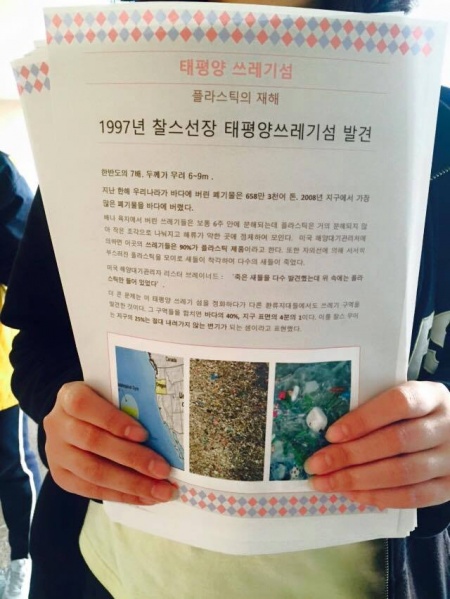Human Practice
Main Subtitle
Campaign 1
The first thing that came to our team’s mind after pondering about how we should apply our project to the real world was campaign. The idea of our campaign was simple: to make people become aware of the situation. Our team designed two steps to further elaborate the plan. Regarding that we all lived in dormitory, the sphere of activity was confined to our school.
The first plan required participation of our school’s students. For three trash baskets in our school, we indicated a different basket only for plastic. After two weeks, our teammates gathered every plastic basket that we put and sorted the trash just in case there were wastes other than plastic. The image below is the how the waste baskets looked when we put it together.



After we were done sorting, we packed plastics for our next step.
The next step was the crux of our campaign. For our project of IGEM fundamentally aimed for seeking ways to save the environment, we designed our next step to appeal to many students as possible of our project. We believed environment was something that all people should be concerned with. Our team created posters that showed the dire situation of ocean wastes such as Great Pacific Garbage Patch. To visualize, we placed the plastics that we gathered on an open space of our school. Students were able to see what we were doing and our team explained to the students of our project.
The first campaign was successful in starting our project with participation of many students. We believe the essence of was in making people aware of the situation. Our team hopes this campaign will be a starting point for contributing further to any environmental activities.




Campaign 2

Children are becoming the leading members of the society in the future, thus our team felt the necessity of alarming the students about the negative impact of plastic on environment and the solution to the problem: meal-worms. Our team requested an educational institute for the gifted in Hankuk University of Foreign Studies to give a lecture to the students about the deleteriousness of plastic and the bacteria. As a result, about twenty students participated in the lecture in September 3rd. Jungeun and Seunghee made the lecture, mainly introducing the mechanism of meal-worm decomposing plastic. We showed and explained the mechanism of meal-worms’ digesting polystyrene. In addition, we offered the students the opportunity to touch and observe meal-worms.


Campaign 3

On the Hankuk Academy of Foreign Studies official Spanish News website, Seunghee Han posted an article about the mealworms digestion mechanism and the potential effect on Earth. The news website is highly accessible which means that a lot of Hispanic people could also know about this bio-biodegradability of mealworms. Also, these newspaper is printed and distributed to Hankuk Academy of Foreign Studies meaning that more students would know about the mealworms' ability.
Fundraising


